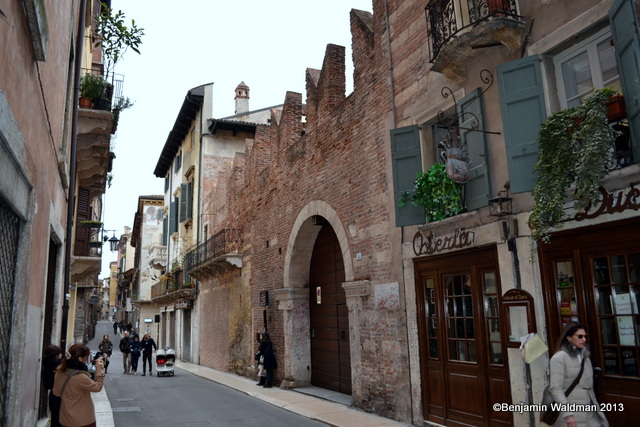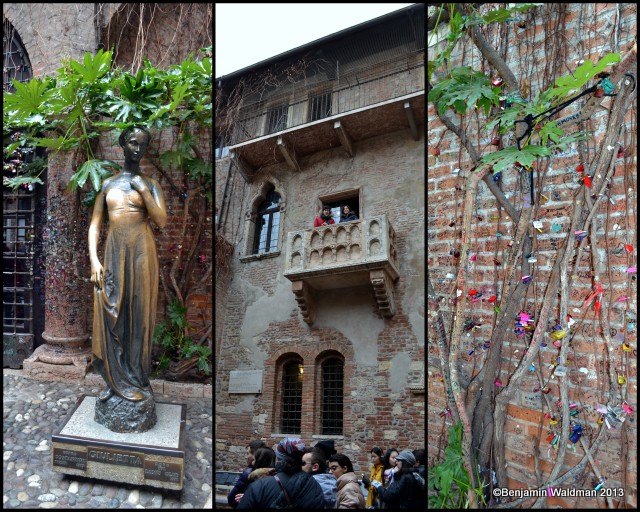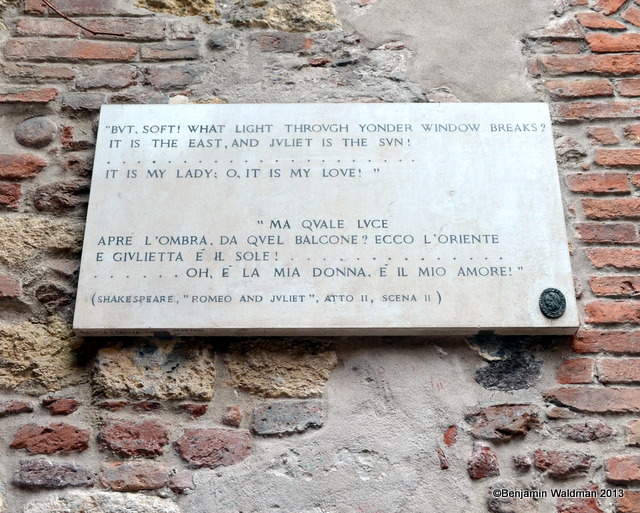
In addition to being a UNESCO World Heritage Site, Verona allows visitors to experience Shakespeare’s Romeo and Juliet first hand. In order to enjoy sites associated with the play though, it is important for visitors to glaze over historical inaccuracies. First, Shakespeare never visited Italy. Second, his play was inspired by other contemporary works which can be traced back to Luigi Da Porto’s La Giulietta, which was published in Venice in 1531.
Da Porto alleged to have learned about the 14th-century star-crossed lovers (Giulietta of the Cappelletti family and Romeo of the rival Montecchi family) from a Veronese archer while serving in the army. Shakespeare retained Verona for the setting of his story while anglicizing the surnames to Capulet and Montague. After the 1936 Academy Award winning film version of the play, the Veronese government realized they could capitalize on the story and set the stage for what visitors can see today, which includes museums, churches, and plaques containing quotes from the play.
1. Casa di Giulietta

Juliet’s House (a 13th-century inn) was purchased by the city in 1936. It was “restored” in the Gothic style with a balcony. The house has a nice exhibit inside (which includes the bed and two costumes of the film version by Franco Zeffirelli) and the balcony provides a great place for photo opportunities. However, it is doubtful that the Cappelletti ever set foot there. Additionally the statue of Juliet in the courtyard is rubbed for good luck and visitors leave locks in the courtyard, a practice that has been spreading around the world especially on bridges.






